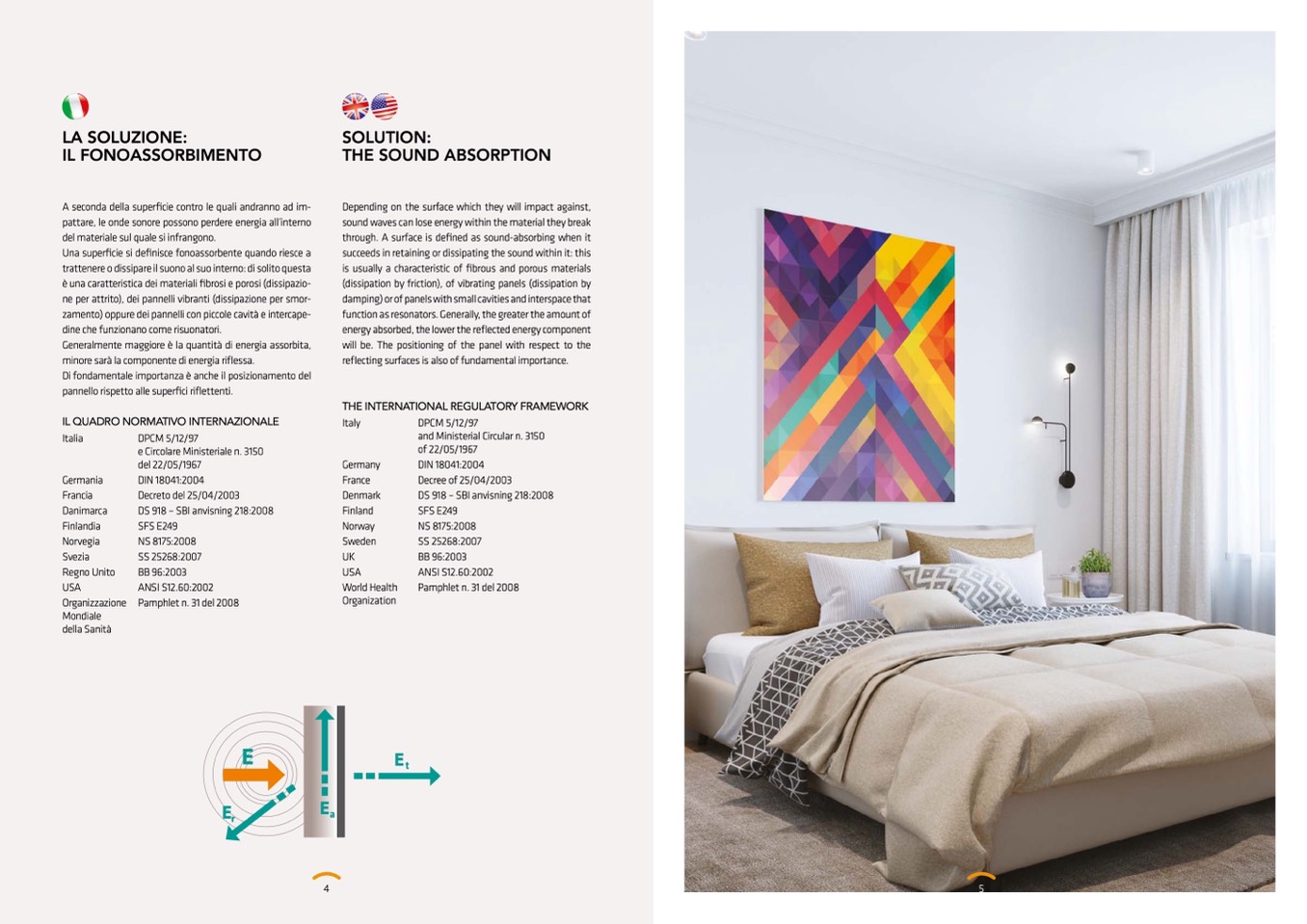
LA SOLUZIONE:
IL FONOASSORBIMENTO
A seconda della superficie contro le quali andranno ad im-
pattare, le onde sonore possono perdere energia all’interno
del materiale sul quale si infrangono.
Una superficie si definisce fonoassorbente quando riesce a
trattenere o dissipare il suono al suo interno: di solito questa
è una caratteristica dei materiali fibrosi e porosi (dissipazio-
ne per attrito), dei pannelli vibranti (dissipazione per smor-
zamento) oppure dei pannelli con piccole cavità e intercape-
dine che funzionano come risuonatori.
Generalmente maggiore è la quantità di energia assorbita,
minore sarà la componente di energia riflessa.
Di fondamentale importanza è anche il posizionamento del
pannello rispetto alle superfici riflettenti.
IL QUADRO NORMATIVO INTERNAZIONALE
SOLUTION:
THE SOUND ABSORPTION
Depending on the surface which they will impact against,
sound waves can lose energy within the material they break
through. A surface is defined as sound-absorbing when it
succeeds in retaining or dissipating the sound within it: this
is usually a characteristic of fibrous and porous materials
(dissipation by friction), of vibrating panels (dissipation by
damping) or of panels with small cavities and interspace that
function as resonators. Generally, the greater the amount of
energy absorbed, the lower the reflected energy component
will be. The positioning of the panel with respect to the
reflecting surfaces is also of fundamental importance.
THE INTERNATIONAL REGULATORY FRAMEWORK
Italia
Germania
Francia
Danimarca
Finlandia
Norvegia
Svezia
Regno Unito
USA
Organizzazione
Mondiale
della Sanità
DPCM 5/12/97
e Circolare Ministeriale n. 3150
del 22/05/1967
DIN 18041:2004
Decreto del 25/04/2003
DS 918 – SBI anvisning 218:2008
SFS E249
NS 8175:2008
SS 25268:2007
BB 96:2003
ANSI S12.60:2002
Pamphlet n. 31 del 2008
Italy
Germany
France
Denmark
Finland
Norway
Sweden
UK
USA
World Health
Organization
DPCM 5/12/97
and Ministerial Circular n. 3150
of 22/05/1967
DIN 18041:2004
Decree of 25/04/2003
DS 918 – SBI anvisning 218:2008
SFS E249
NS 8175:2008
SS 25268:2007
BB 96:2003
ANSI S12.60:2002
Pamphlet n. 31 del 2008
4
5

